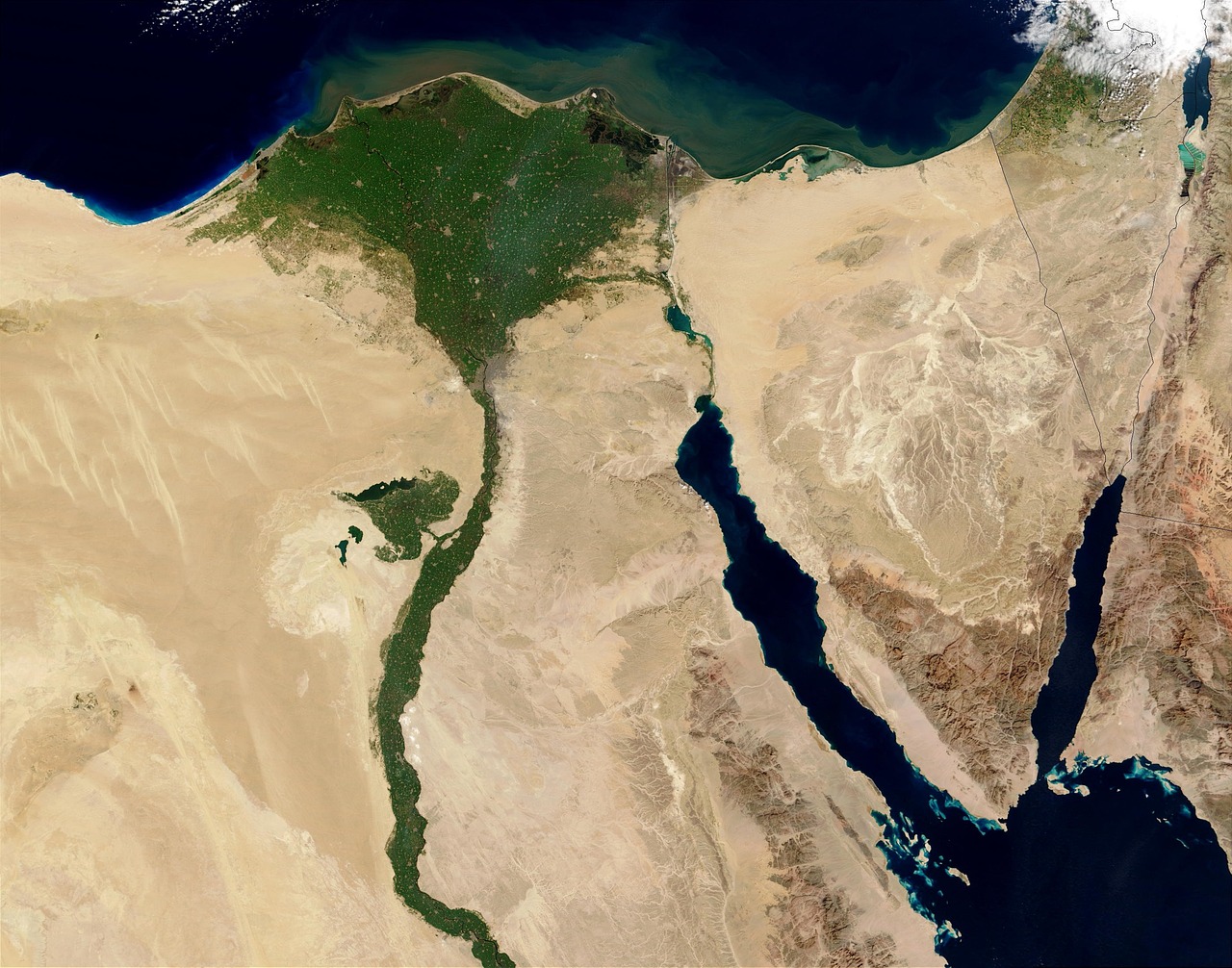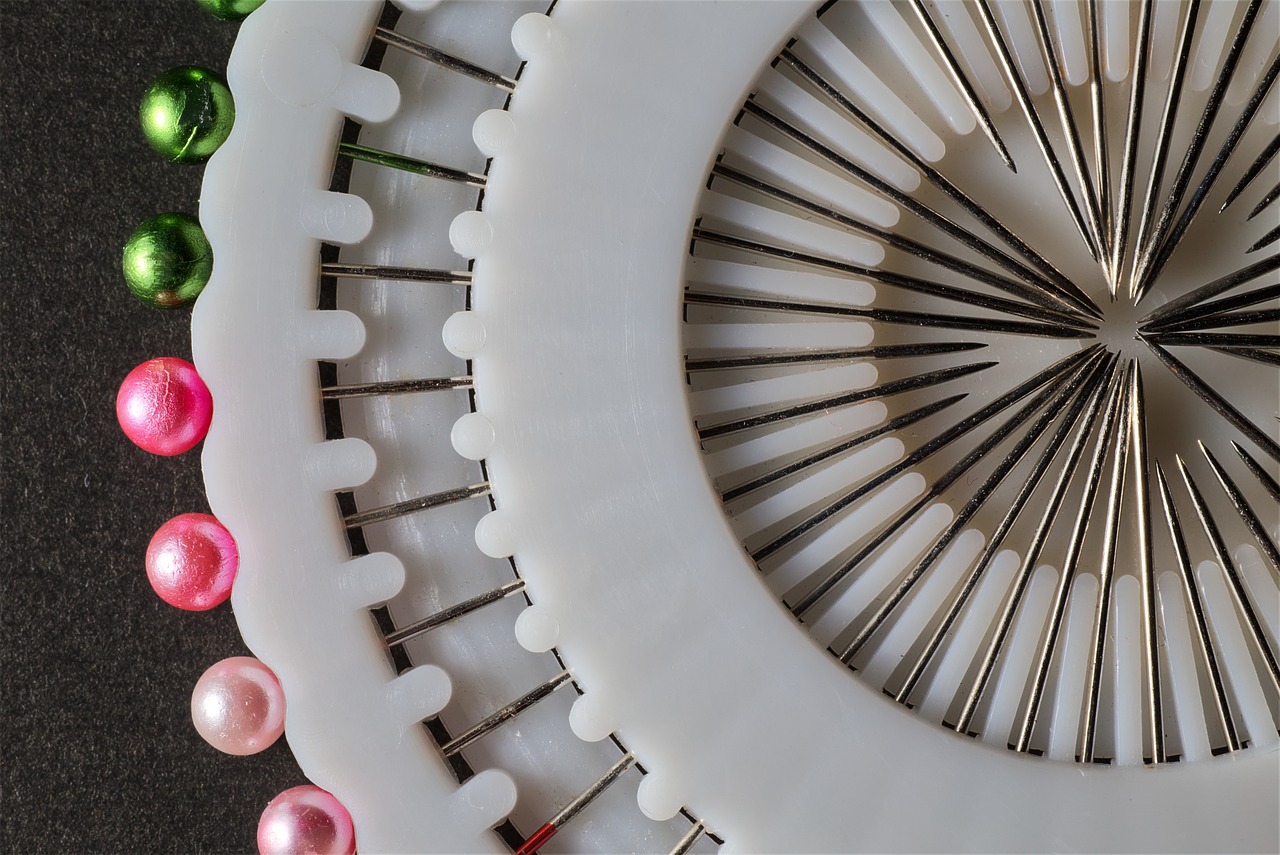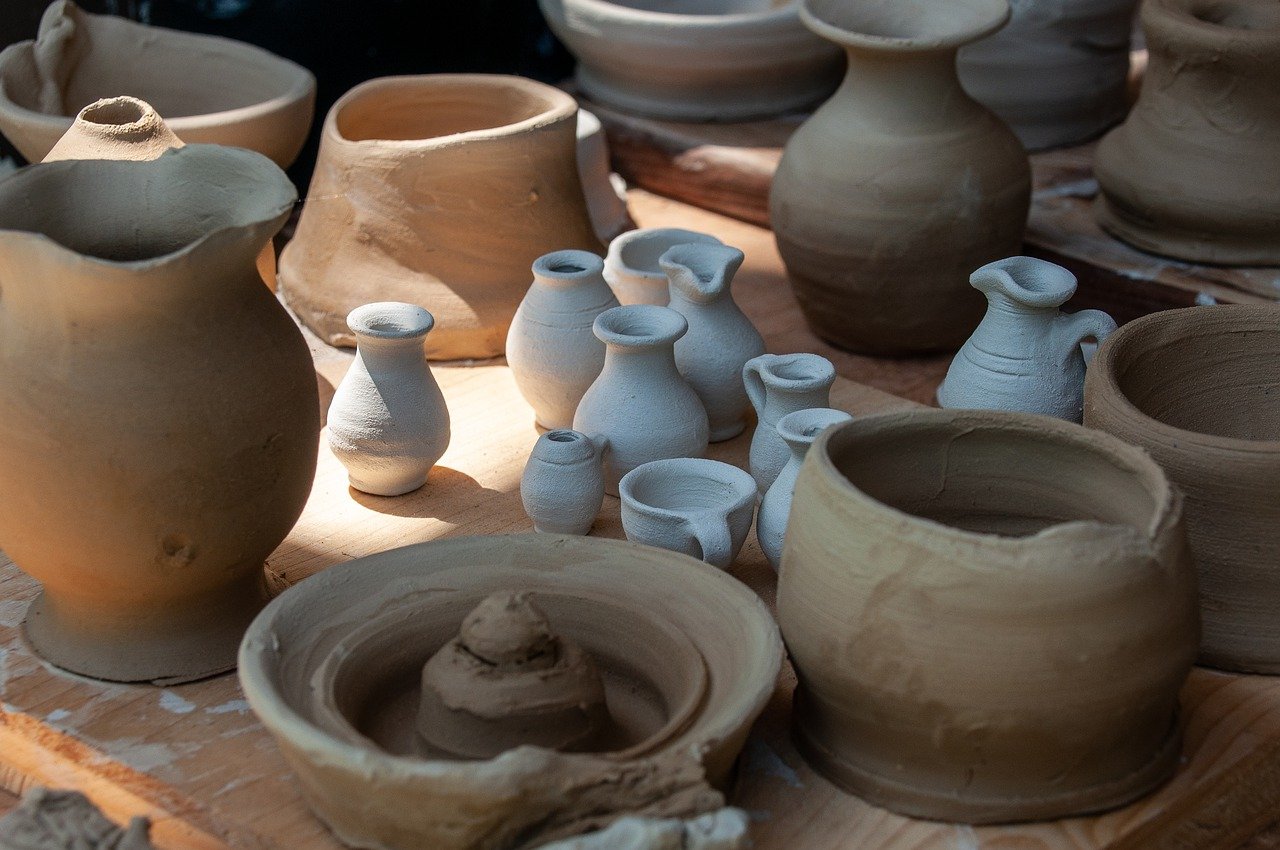Satellite Crafts for Space-loving Kids
Are you ready to embark on an exciting journey through the cosmos with your little astronauts? Satellite crafts are not just a fantastic way to keep kids entertained; they're also a gateway to understanding the universe! Imagine your child constructing their very own satellite model while learning about the wonders of space exploration. These hands-on activities can ignite a passion for science and technology, making learning fun and engaging.
In a world where technology reigns supreme, fostering an interest in STEM (Science, Technology, Engineering, and Mathematics) is crucial. Satellite crafts serve as a perfect blend of creativity and education, allowing kids to explore complex concepts in a way that feels like play. Just think about it—what better way to learn about orbits, gravity, and the mysteries of the universe than by creating something tangible? These projects not only stimulate the imagination but also encourage critical thinking and problem-solving skills.
So, gather your little ones and let their creativity soar as they build their own satellites! Whether it's a whimsical cardboard creation or a rocket made from recycled materials, each project is a step toward understanding the vastness of space. Plus, you'll be surprised at how much they can learn while having fun. Ready to dive into the world of satellite crafts? Let’s explore some exciting ideas and materials that will get those creative juices flowing!
Discover the importance of satellite crafts in promoting STEM education for children. These activities not only foster creativity but also enhance understanding of space and technology.
Gathering the right materials is crucial for successful satellite crafts. Explore common household items and craft supplies that can be used to create engaging satellite models.
Using recyclable materials for satellite crafts is eco-friendly and economical. Learn how to repurpose items like cardboard, plastic bottles, and tin cans into creative satellite projects.
Creating satellites from cardboard is a fun and straightforward craft. This section provides step-by-step instructions on how to make a simple cardboard satellite model.
Transforming plastic bottles into rockets is an exciting way to explore aerodynamics. This guide offers tips on crafting and launching your own plastic bottle rocket satellite.
Encouraging creativity, this section focuses on painting and decorating satellite models. Discover various artistic techniques to make your satellite crafts visually appealing.
Engaging in satellite crafts provides numerous educational benefits. This section highlights how these activities can enhance children's understanding of science, technology, engineering, and mathematics.
Through crafts, kids can visualize and learn about satellite orbits. This subsection explains how to incorporate lessons on gravity and motion into crafting activities.
Introduce children to key concepts of space exploration through crafts. This section discusses how satellite crafts can spark interest in astronomy and space missions.
Wrap up your satellite crafting experience with a summary of what was learned. Encourage kids to continue exploring space through additional projects and activities.
Q: What age group is suitable for satellite crafts?
A: Satellite crafts can be enjoyed by children of all ages! Younger kids may need assistance, while older children can take on more complex projects independently.
Q: Can we use materials other than cardboard and plastic?
A: Absolutely! You can use a variety of materials such as paper, tin cans, and even old toys. The key is to let your creativity shine!
Q: How can satellite crafts help with learning?
A: These crafts provide a hands-on approach to learning about space, technology, and engineering concepts, making them more relatable and easier to understand for kids.
Q: Are there any online resources for satellite craft ideas?
A: Yes! Many educational websites and craft blogs offer tutorials and ideas for satellite crafts. A quick search can yield a treasure trove of inspiration!

Introduction to Satellite Crafts
Have you ever looked up at the night sky and wondered about the twinkling stars and the mysterious satellites orbiting our planet? Satellite crafts are not just a fun way to spend an afternoon; they are a gateway to understanding the vast universe that surrounds us. These creative projects serve as a bridge between imagination and education, allowing children to explore the realms of science, technology, engineering, and mathematics (STEM) in an engaging manner.
When kids get involved in crafting their own satellites, they are not only having fun but also developing critical skills that will benefit them in the future. Imagine a child using their hands to build a model of a satellite; as they cut, glue, and paint, they are learning about design, structure, and function. This hands-on experience is invaluable in fostering a deeper understanding of how satellites work and their role in space exploration. It's like building a bridge between the classroom and the cosmos!
Furthermore, satellite crafts can ignite a child's curiosity about space exploration. As they create their own models, they may start asking questions like, "How do satellites stay in orbit?" or "What do satellites do for us?" These questions can lead to exciting discussions and explorations of topics such as gravity, motion, and the technology behind satellite communication. In essence, satellite crafts are not just about making something cool; they are about sparking a lifelong interest in science and discovery.
So, whether you're a parent, teacher, or simply someone looking to inspire the next generation of space enthusiasts, incorporating satellite crafts into your activities can be both educational and entertaining. With just a few materials and a sprinkle of creativity, you can help young minds reach for the stars!

Materials Needed
When diving into the world of satellite crafts, having the right materials at your fingertips is essential. Not only does this make the crafting process smoother, but it also opens up a world of creativity for kids. You don't need to rush out to a specialty store; many of the materials can be found right in your home! From recyclable items to basic craft supplies, the possibilities are endless. Here’s a rundown of what you might need:
First and foremost, gather some recyclable materials. These eco-friendly options not only help the planet but also encourage kids to think about sustainability. Common items include:
- Cardboard boxes
- Plastic bottles
- Tin cans
- Egg cartons
- Old newspapers or magazines
Next, you’ll want to stock up on some basic craft supplies. These can elevate your satellite projects from simple to spectacular. Here’s a list of must-have items:
- Scissors
- Glue (white glue or hot glue gun)
- Paints and brushes
- Markers or colored pencils
- String or yarn for hanging models
- Foil or shiny paper for a realistic satellite look
Additionally, consider incorporating some science tools into your crafting experience. Items like a ruler, compass, or even a protractor can help kids understand measurements and angles, enhancing their learning experience. If you're feeling adventurous, you can also include items for creating interactive elements like LEDs or small motors to make your satellites light up or spin!
With these materials on hand, you're all set to embark on a creative journey that not only entertains but also educates. Remember, the goal is to inspire curiosity about space while having a blast crafting. So gather your supplies, roll up your sleeves, and let the satellite crafting adventure begin!

Recyclable Materials
When it comes to crafting, especially for our budding space enthusiasts, using is not just a smart choice—it's an adventure in creativity! Imagine transforming everyday items into stellar satellite models that can orbit your imagination. By repurposing materials like cardboard, plastic bottles, and tin cans, kids can engage in eco-friendly crafting while learning about the importance of sustainability. Plus, it’s a fantastic way to keep costs down while maximizing fun!
Let’s dive into some of the most common recyclable materials you can use:
- Cardboard: Old boxes, cereal packaging, and even toilet paper rolls can be transformed into satellites. Cardboard is versatile and easy to cut, making it perfect for building structures.
- Plastic Bottles: Empty soda or water bottles can become the body of a rocket or a satellite. They’re lightweight and can easily be painted or decorated.
- Tin Cans: After enjoying your favorite canned goods, don’t toss those cans! They can be painted and turned into mini satellites or even used as bases for more complex models.
Using these items not only sparks creativity but also teaches kids about recycling and the importance of reducing waste. You can even turn it into a fun challenge: how many different satellite designs can you create with just a few recyclable materials? The possibilities are as vast as space itself!
Moreover, engaging with these materials helps children develop fine motor skills and encourages problem-solving as they figure out how to construct their models. They might even learn some basic engineering principles along the way! So, gather those recyclables and let the crafting journey begin—your young astronauts are about to launch into a world of creativity!

Cardboard Satellites
Creating satellites from cardboard is not only a fun craft project but also a fantastic way to introduce children to the fascinating world of space exploration. This hands-on activity allows kids to engage their creativity while learning about the structure and purpose of satellites. Plus, cardboard is a readily available material, making this craft both affordable and eco-friendly. Imagine transforming a simple cardboard box into a miniature satellite that could orbit the imagination!
To get started, gather the following materials:
- Cardboard boxes (old shoeboxes work great!)
- Scissors
- Glue or tape
- Markers, paint, or colored paper for decoration
- Small items for details (like bottle caps or buttons)
Now, let’s dive into the step-by-step process of making your very own cardboard satellite:
- Design Your Satellite: Before cutting, sketch out your satellite design. Think about its shape, size, and the features you want to include. Will it have solar panels? Antennas? This is where imagination takes flight!
- Cut the Cardboard: Carefully cut the cardboard into the shapes you need. For a basic satellite, you might want a rectangular body and a couple of flat pieces for the solar panels.
- Assemble the Pieces: Use glue or tape to attach the solar panels to the main body of the satellite. Make sure everything is secure, so your satellite can withstand some imaginative space adventures!
- Decorate: This is the fun part! Use markers, paint, or colored paper to add details to your satellite. You can create realistic designs or let your creativity run wild with bright colors and unique patterns.
- Display Your Creation: Once your satellite is complete, find a special place to display it. You could even set up a mini space station at home where all your crafts can coexist!
As a bonus, encourage kids to think about what their satellites might do if they were in orbit. Would they be sending signals back to Earth? Taking pictures of distant planets? This imaginative aspect not only enhances the crafting experience but also fosters a deeper understanding of the functionality of real satellites.
In conclusion, making cardboard satellites is a delightful way for kids to explore their creativity while learning about space. It’s a project that can be easily adapted for various age groups and skill levels, ensuring that everyone can join in on the fun. So gather your materials, unleash your creativity, and let the crafting begin!
Q1: What age group is suitable for cardboard satellite crafts?
A1: Cardboard satellite crafts are suitable for children ages 6 and up. Younger children may need adult supervision, especially when using scissors.
Q2: Can we use other materials besides cardboard?
A2: Absolutely! While cardboard is ideal, you can also use materials like paper, plastic, or even recycled items to create unique satellite designs.
Q3: How long does it take to complete a cardboard satellite?
A3: The crafting time can vary depending on the complexity of the design, but most projects can be completed in about 1 to 2 hours.
Q4: What educational concepts can children learn from this activity?
A4: Children can learn about the structure and purpose of satellites, basic engineering principles, and even concepts related to space exploration and orbits.

Plastic Bottle Rockets
Transforming plastic bottles into rockets is not just an exciting craft; it's an adventure in the world of aerodynamics! Imagine launching your very own rocket into the sky, all while learning about the principles of flight and propulsion. This hands-on project is perfect for kids who are curious about how things work and are eager to explore the vastness of space.
To get started, you'll need a few common materials that you likely already have at home. Here’s a quick list of the essentials:
- Empty plastic bottles (1 or 2-liter works best)
- Water
- Cork that fits snugly in the bottle opening
- Bicycle pump or air compressor
- Optional: Paints, markers, or stickers for decoration
Once you've gathered your materials, the fun really begins! Begin by decorating your plastic bottle. Let your imagination run wild—paint it like a space shuttle or add stickers of planets and stars. This step not only makes the rocket visually appealing but also gets kids excited about their creation.
Next, fill the bottle about one-third full with water. This is where the magic happens! The water acts as the propellant for your rocket. Once filled, carefully insert the cork into the opening of the bottle. Make sure it’s tight enough to hold the pressure but not so tight that it can't pop out easily.
Now, here comes the thrilling part! Attach the bicycle pump to the cork. As you pump air into the bottle, the pressure will build up. When it becomes too much for the cork to hold, the cork will launch out, propelling the water—and your rocket—into the air! It's a fantastic demonstration of Newton's Third Law: for every action, there is an equal and opposite reaction.
To ensure a successful launch, remember to choose a safe outdoor location away from trees, buildings, and power lines. Watching your rocket soar high into the sky is an exhilarating experience that will leave kids cheering and wanting to launch again and again!
For those interested in taking this project a step further, consider experimenting with different variables:
- Try varying the amount of water to see how it affects the height of the rocket.
- Change the shape of the rocket by using different bottle sizes or adding fins made from cardboard.
- Test launching at different angles to observe how it impacts the flight path.
Through this engaging activity, children will not only have a blast launching their rockets but will also gain a deeper understanding of the science behind flight. So, gather those materials, unleash your creativity, and get ready for an unforgettable journey into the world of space exploration!
Q: What age group is this project suitable for?
A: This project is great for kids ages 8 and up, but younger children can participate with adult supervision.
Q: Can we use any type of bottle?
A: While you can use various types of plastic bottles, larger bottles (like 2-liter soda bottles) tend to work best for achieving higher flights.
Q: Is it safe to launch rockets indoors?
A: No, it’s important to launch your plastic bottle rockets outdoors in a safe area to avoid any accidents or damage.
Q: How high can these rockets go?
A: The height can vary based on the amount of water used and the air pressure, but many have reported launches reaching 30 feet or more!

Artistic Satellite Designs
When it comes to crafting, the sky's the limit—especially when you're creating your own satellite designs! Not only do these projects allow kids to express their creativity, but they also provide an excellent opportunity to learn about the aesthetics of space technology. Imagine turning a simple cardboard box into a dazzling satellite that looks like it just launched from Cape Canaveral! The beauty of artistic satellite designs lies in their flexibility; you can use a variety of materials and techniques to bring your visions to life.
To get started, gather your supplies. You might want to have some acrylic paints, markers, and even glitter on hand for those extra sparkles. You can also use materials like colored paper or stickers to enhance your designs. The goal is to make your satellite not just functional but also a piece of art that you can proudly display. Remember, there's no right or wrong way to decorate; the only limit is your imagination!
One fun technique is to explore themed designs. For instance, you could create a satellite that represents a specific planet or moon. A Mars satellite might be painted in shades of red and orange, while a Jupiter satellite could feature swirling patterns of brown and white. This not only makes the craft more engaging but also teaches kids about the unique characteristics of different celestial bodies.
In addition to painting, consider incorporating 3D elements into your designs. You can use items like bottle caps for antennas or small cardboard tubes for rocket boosters. This adds depth to your crafts and makes them even more visually appealing. The more layers and textures you add, the more your satellite will stand out!
Finally, don't forget to share your creations! Organize a mini-exhibit at home or in the classroom where kids can showcase their artistic satellite designs. This not only boosts their confidence but also encourages a spirit of collaboration and learning among peers. It’s a great way to discuss what they learned about satellites and space while appreciating each other's unique artistic styles.
- What materials are best for artistic satellite designs? Common materials include cardboard, plastic bottles, paints, and various decorative items like glitter and stickers.
- Can I use recycled materials? Absolutely! Recycled materials are a fantastic way to create unique satellite designs while being eco-friendly.
- How can I incorporate educational elements into the craft? Discuss the characteristics of different planets or the function of satellites while crafting to enhance the learning experience.

Educational Benefits
Engaging in satellite crafts provides numerous that extend far beyond mere entertainment. These hands-on activities are a gateway to the fascinating world of science, technology, engineering, and mathematics (STEM). By integrating creativity with learning, children not only develop their artistic skills but also gain a deeper understanding of complex concepts related to space and technology. Imagine a child, eyes wide with wonder, as they assemble a satellite model—each piece representing a new idea and a new lesson. This is the magic of satellite crafts!
Through these crafts, kids can explore fundamental scientific principles, such as the laws of motion and the concept of orbits. For instance, when creating a cardboard satellite, children can learn about the forces of gravity and how they affect objects in space. They can visualize how satellites orbit the Earth, which helps them grasp the idea of orbital mechanics in a tangible way. Not only does this enhance their understanding, but it also makes learning fun!
Moreover, satellite crafts serve as a springboard for discussions about space exploration. Children can delve into topics like the history of satellites, the role they play in modern communication, and the exciting missions that space agencies undertake. By sparking curiosity about the universe, these crafts can ignite a lifelong passion for astronomy and science. For example, while painting their satellite models, kids can discuss famous satellites like the Hubble Space Telescope or the Mars Rover, linking their creative projects to real-world applications.
Here’s a quick look at some of the key educational benefits of engaging in satellite crafts:
- Enhances Creativity: Crafting encourages children to think outside the box and express themselves artistically.
- Promotes Problem-Solving Skills: Constructing models requires critical thinking and the ability to troubleshoot issues that arise during the crafting process.
- Encourages Teamwork: Many crafts can be done in groups, fostering collaboration and communication among peers.
- Boosts Scientific Literacy: As children learn about satellites, they become more familiar with scientific terminology and concepts.
Incorporating lessons about space exploration concepts into crafting activities also allows children to connect their hands-on experiences with theoretical knowledge. For example, after building a satellite model, children can simulate its launch and discuss the physics involved in getting it into orbit. This not only solidifies their understanding but also makes the learning experience dynamic and engaging.
In conclusion, satellite crafts are more than just fun projects; they are powerful tools for education. By fostering a love for learning and exploration, these activities can inspire the next generation of scientists, engineers, and astronauts. So, gather those materials, unleash your creativity, and watch as curiosity takes flight!
Here are some common questions parents might have about satellite crafts:
- What age group is best suited for satellite crafts? Satellite crafts can be adapted for various age groups, typically starting from preschoolers to pre-teens, with complexity adjusted according to the child's age.
- Do I need special materials to start? Not at all! Most satellite craft projects can be made using common household items and recyclable materials.
- Can these crafts be used in a classroom setting? Absolutely! Satellite crafts are excellent for classroom activities, promoting teamwork and interactive learning.
- How can I extend the learning experience beyond crafting? Consider incorporating books, documentaries, or online resources about space exploration to enhance the educational experience.

Understanding Orbits
When it comes to the fascinating world of space, one of the most intriguing concepts is that of orbits. Imagine throwing a ball in the air; it goes up, reaches a peak, and then comes back down. Now, think of a satellite as that ball, but instead of falling back to Earth, it keeps moving in a curved path around our planet. This is what we call an orbit! By engaging in satellite crafts, kids can not only create fun models but also gain a deeper understanding of how these orbits work.
Orbits can be a bit tricky to grasp, but they can be visualized with the right tools and explanations. For instance, you can explain to children how satellites are launched into space and then placed into specific orbits based on their mission. There are different types of orbits, such as:
- Low Earth Orbit (LEO): This is where many satellites, including the International Space Station, reside. They orbit close to Earth, usually at an altitude of about 200 to 2,000 kilometers.
- Geostationary Orbit (GEO): Satellites in this orbit appear to be stationary relative to a point on Earth. They orbit at an altitude of approximately 35,786 kilometers, making them perfect for communication satellites.
- Polar Orbit: These satellites pass over the Earth’s poles, allowing them to scan the entire surface of the planet over time. They are often used for weather and environmental monitoring.
To make this concept even more engaging, you can incorporate a simple experiment using your satellite crafts. For example, once kids have built their cardboard satellites, you can simulate orbits using a spinning motion. Have them hold their satellite on a string and swing it around in a circle. This demonstration mimics how gravitational forces keep satellites in their orbits, making the learning process both interactive and memorable.
Moreover, you can introduce the concept of gravity—the invisible force that pulls objects towards one another. Explain how the Earth’s gravity is what keeps satellites in orbit and prevents them from drifting off into space. By using visuals and hands-on activities, children will start to connect the dots between crafting and the scientific principles behind satellite movement.
As they engage in these activities, encourage them to ask questions. Why do some satellites need to be in low orbits while others are in geostationary orbits? What happens if a satellite goes out of orbit? These discussions will not only spark curiosity but also promote critical thinking skills.
In summary, understanding orbits is a key aspect of learning about satellites. By incorporating crafts and interactive activities, children can visualize and comprehend how satellites function in space. This hands-on approach not only makes learning fun but also instills a sense of wonder about the universe and the technology that allows us to explore it.
Q1: What materials do I need to create a cardboard satellite?
A1: You will need cardboard, scissors, glue, markers, and any decorative items you wish to use, such as stickers or paint.
Q2: How can I explain gravity to my kids?
A2: You can use simple experiments like dropping different objects to show how they fall to the ground due to gravity, or use a string to demonstrate how satellites stay in orbit.
Q3: What is the purpose of satellites?
A3: Satellites serve various purposes, including communication, weather monitoring, navigation, and scientific research.
Q4: How do satellites get into orbit?
A4: Satellites are launched into space using rockets, which propel them to the required altitude and speed to achieve orbit.

Space Exploration Concepts
When it comes to igniting a child's interest in the vast universe beyond our planet, satellite crafts serve as a fantastic gateway. These hands-on projects not only allow kids to get creative but also introduce them to the thrilling concepts of space exploration. Imagine building a model satellite and learning how it orbits Earth—it's like creating your own mini space program right at home!
One of the key concepts to explore is the idea of orbits. Kids can visualize how satellites travel in elliptical paths around planets. You can illustrate this by using a simple craft where they create a model of Earth and a satellite, showing how the satellite remains in orbit. This can lead to discussions about gravity, momentum, and the delicate balance that keeps satellites from drifting away into the cosmos.
Furthermore, satellite crafts can introduce children to the various types of satellites and their purposes. For instance, they can learn about:
- Communication Satellites: These are essential for transmitting television, internet, and phone signals.
- Weather Satellites: These help in forecasting weather patterns and monitoring climate changes.
- Scientific Satellites: These are used for research, studying the universe, and gathering data about celestial bodies.
By incorporating these concepts into their crafting, kids can develop a deeper understanding of how satellites impact our daily lives. For example, you might ask them how they think communication satellites have changed the way we connect with others. This not only encourages critical thinking but also fosters a sense of wonder about technology and its applications in real-world scenarios.
Additionally, discussing space missions can spark curiosity. You could highlight famous missions like the Hubble Space Telescope or the Voyager probes. Crafting a model of the Hubble can lead to an exploration of how telescopes work and the incredible images they capture from distant galaxies. This can be a starting point for kids to dream about becoming astronauts or scientists one day!
In essence, satellite crafts are not just about creating something visually appealing; they are a tool for education and inspiration. By blending creativity with science, kids can embark on a journey through space exploration, learning valuable lessons about our universe along the way.
Q: What age group is suitable for satellite crafts?
A: Satellite crafts can be tailored for various age groups, typically from ages 5 to 12, with varying complexity based on the child's skill level.
Q: Do I need special materials to create satellite crafts?
A: No special materials are needed! Common household items like cardboard, plastic bottles, and paint can be used to create engaging satellite models.
Q: How can I incorporate learning into the crafting process?
A: Discuss the functions of different types of satellites and their role in space exploration while crafting. This can enhance understanding and spark curiosity.
Q: Can these crafts be done indoors?
A: Absolutely! Satellite crafts are perfect for indoor activities, making them great for rainy days or educational sessions at home.

Conclusion and Next Steps
In conclusion, engaging in satellite crafts is not just a fun way to spend time; it’s a fantastic opportunity for children to dive into the world of science, technology, engineering, and mathematics (STEM). These hands-on activities not only stimulate creativity but also help kids grasp complex concepts related to space exploration and satellite functionality. As you wrap up your crafting experience, take a moment to reflect on the exciting journey through the universe that these projects have facilitated.
Encouraging your kids to continue exploring space can lead to a lifelong passion for learning. Here are some next steps you can consider:
- Visit a Planetarium: Check out a local planetarium or science center where your children can see real-life exhibits about space.
- Read Books About Space: Explore children's books that delve into space exploration. Titles like "There's No Place Like Space" by Tish Rabe can be both educational and entertaining.
- Watch Documentaries: Find age-appropriate documentaries about satellites and space missions to watch together as a family.
- Join a STEM Club: Look for local clubs or online communities where your children can engage with peers who share their interests in space and science.
By incorporating these activities into your routine, you’ll not only reinforce what they learned through crafting but also spark further curiosity about the cosmos. Remember, the universe is vast and filled with wonders waiting to be discovered, so keep the momentum going!
Here are some common questions parents might have about satellite crafts and their educational benefits:
| Question | Answer |
|---|---|
| What age group is suitable for satellite crafts? | Satellite crafts are suitable for children aged 5 and up, with activities adaptable for various skill levels. |
| Do I need special materials for these crafts? | No, most satellite crafts can be made using common household items and recyclable materials. |
| How can I make these crafts more educational? | Incorporate lessons on orbits, gravity, and famous space missions while crafting to enhance the educational experience. |
| Can these crafts be done indoors? | Yes, many satellite crafts can be done indoors, making them a great activity for rainy days. |
By exploring these questions and answers, you can better understand how to maximize the benefits of satellite crafts for your children. So, gather those materials, unleash your creativity, and embark on an adventure that will take you to the stars!
Frequently Asked Questions
- What age group is suitable for satellite crafts?
Satellite crafts are perfect for kids aged 5 and up! Younger children might need some help from adults, but they can still enjoy the fun of creating their own satellites. It's all about sparking their curiosity about space while having a blast!
- What materials do I need to get started?
You don’t need to break the bank! Common household items work wonders for satellite crafts. Think cardboard boxes, plastic bottles, tin cans, and some basic craft supplies like scissors, glue, and paint. Gather these, and you’re ready to launch into creativity!
- Can satellite crafts help with learning?
Absolutely! These crafts are a fantastic way to introduce kids to STEM concepts. While they’re having fun, they’re also learning about orbits, gravity, and the basics of aerodynamics. It’s like sneaking in education while they think they’re just playing!
- How do I incorporate educational lessons into crafting?
Great question! You can turn crafting time into a mini-lesson. For example, while making a cardboard satellite, discuss how satellites orbit the Earth and why they’re important. Use simple language and relatable examples to keep them engaged!
- Are there eco-friendly options for satellite crafts?
Yes, indeed! Using recyclable materials not only helps the planet but also encourages creativity. Items like old cardboard, plastic bottles, and even egg cartons can be transformed into unique satellite models. It’s a win-win for fun and sustainability!
- What’s the best way to decorate satellite crafts?
Let your imagination run wild! You can use paint, glitter, stickers, or even markers to make your satellites visually stunning. Encourage kids to think about what real satellites look like and let that inspire their designs!
- Can we launch the crafts after making them?
For sure! If you make a plastic bottle rocket, you can launch it outside and watch it soar. Just make sure to follow safety guidelines and choose a clear area for launching. It adds an exciting twist to the crafting experience!



















